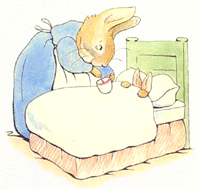| Tweet |

【妻:w(t+1)=a+r1*w(t)+ihw[h(t)] /夫:H(t+1)=b+r2*h(t)+iwh[w(t)]】 「離婚を予測する公式」、英国の数学者が考案
▼▼▼▼▼▼▼▼▼▼▼▼▼▼▼▼▼▼▼▼▼▼▼▼▼▼▼▼▼▼▼▼▼▼
http://www.afpbb.com/article/life-culture/life/2586723/3963714
「離婚を予測する公式」、英国の数学者が考案
2009年03月27日 11:39 発信地:ロンドン/英国
【3月27日 AFP】結婚したカップルが最後まで添い遂げるのか、あるいは離婚してしまうのか――。英国の数学者が26日、94%の精度で離婚するかどうか予測する「公式」を発案したと発表した。
オックスフォード大学(Oxford University)のジェームス・マレー(James Murray)教授が率いる研究チームは、新婚夫婦700組を対象に、お金やセックスなど物議を醸すようなテーマについて15分間話し合ってもらい、録音した。その後ユーモアや愛情を含む発言にはプラス、保身や怒りを含む発言にはマイナスの点数を付け、その採点結果からその後の夫婦関係を数学モデルを使って予測した。
12年間にわたって1-2年ごとに追跡調査をした結果、同教授の数学モデルは94%の正確さで離婚を予測していたことが明らかとなった。
マレー教授は、「時に興奮したり感情的になることもある夫婦間の話し合いから、これほど容易かつ効果的に、非常に単純な数学モデルで夫婦の関係を予測できるということは驚くべきことだ」と語った。
(c)AFP
▲▲▲▲▲▲▲▲▲▲▲▲▲▲▲▲▲▲▲▲▲▲▲▲▲▲▲▲▲▲▲▲▲▲
▼▼▼▼▼▼▼▼▼▼▼▼▼▼▼▼▼▼▼▼▼▼▼▼▼▼▼▼▼▼▼▼▼▼
http://www.nationalpost.com/home/story.html?id=2F765C0E-6D37-4821-83E1-0CACBB810CF4
Tuesday » August 12 » 2003
Scientists devise formula for happy marriage
Equation predicts bliss
Chris Lackner
National Post, with files from news services
Saturday, August 09, 2003
The secret to a successful marriage can be found in a mathematical formula, according to American researchers, who believe they can use equations to predict a newlywed couple's chances for marital bliss.
Researchers at the University of Washington have devised two formulas that they say allows them to predict, with a 94% success rate, whether a new marriage will last. And all it takes is a 15-minute interview.
The formulas used to detect newlywed joy or disaster were publicly presented for the first time this week by mathematician Dr. James Murray, who spoke at the Mathematical Biology Conference at Dundee University in Scotland.
The presentation was based on a 10-year study of 700 American couples conducted by Dr. Murray and psychologist Dr. John Gottman, both from the University of Washington in Seattle.
"Positive things can be taken from [the formula]. It points out why some people are having problems and can show what action has to be taken to save the marriage," Dr. Murray said.
All the couples who participated in the experiment were initially observed by researchers during a 15-minute conversation shortly after they were married in the early 1990s.
Participants were asked to discuss contentious marital issues, such as money, sex or children. The couple's ability to discuss the issue was evaluated according to a mathematical scale that awarded positive points for good signals and negative points for bad signals.
Bad signals included rolling of the eyes, criticism or mockery of one's partner, as well as displays of coldness and negativity. Positive signs included displays of humour, positive vocal tone, smiles and affectionate gestures.
"We used an accepted psychological scoring system to award them points, such as minus three for scorn and plus two for humour," Dr. Murray said. "Then we put their points on a graph and by converting them into algebraic terms were able to make our divorce predictions.
"We didn't tell the volunteers, of course ... telling a couple their marriage is going to fail is not what they want to hear."
The results of the observations were used to develop an equation for both husbands and wives and each couple was contacted every two years to ascertain the state of their marriage. Researchers say they were able to predict the success or failure of each couple with an accuracy of almost 94%.
Other variables were taken into account during the experiment in order to determine a couple's compatibility, Dr. Murray said, including the effect an individual's contribution to the conversation had on the the mood of his or her spouse.
"The key thing that comes out of it is that we have been able to calculate how people interact," Dr. Murray said.
"For example, the wife might be a conflict avoider and the husband might be volatile. That marriage would not survive."
Our society is marriage-obsessed and naturally inclined to believe in marital perfection, said Julie Rak, an English professor and popular culture expert at the University of Alberta.
Ms. Rak said people often make decisions in their lives according to a formula our culture dictates, including when to get married, when to have kids and custom-based beliefs such monogamy and the search for one ideal partner.
"We learn from a very early age that there there is only one person in the world for us, which is mathematically ridiculous," Ms. Rak said.
"Marriage is not like that and people are always not predictable and change over time."
"I think we're taught that marriage is an ideal that we aspire to," she said.
"The reality is quite different. Divorce rates are much higher than they once were."
THE MATHEMATICS OF MARRIAGE:
Wife's equation w(t+1)=a+r1*w(t)+ihw[h(t)]
w= wife, h= husband, t= time a= a constant representing the wife's state of mind when she is not with her husband. r1*w(t)= represents how easy it is to change her state of mind when she is in conversation with her husband. ihw= "influence function" -- a measure of the influence that a husband's remarks have on his wife. h(t)= the husband's "score" during their 15-minute conversation. w(t+1)=how the wife has reacted to her husband's conversation -- the higher the number then the greater the likelihood of divorce
Husband's equation H(t+1)=b+r2*h(t)+iwh[w(t)]
b= a constant representing the husband's state of mind when he is not with his wife. r2*w(t)= represents how easy it is for him to change his state of mind when he is in conversation with his wife. iwh= "influence function" -- a measure of the influence that a wife's remarks have on her husband. w(t)= the wife's score during their 15-minute conversation. H(t+1)= how the husband has reacted to his wife's conversation -- the higher the number then the greater the likelihood of divorce
clackner@nationalpost.com
© Copyright 2003 National Post
▲▲▲▲▲▲▲▲▲▲▲▲▲▲▲▲▲▲▲▲▲▲▲▲▲▲▲▲▲▲▲▲▲▲
|
|
▲このページのTOPへ HOME > Ψ空耳の丘Ψ55掲示板
フォローアップ:
|
|
投稿コメント全ログ コメント即時配信 スレ建て依頼 削除コメント確認方法
|
|
 題名には必ず「阿修羅さんへ」と記述してください。
題名には必ず「阿修羅さんへ」と記述してください。
掲示板,MLを含むこのサイトすべての
一切の引用、転載、リンクを許可いたします。確認メールは不要です。
引用元リンクを表示してください。
|
|
|
|
|
|
|
|